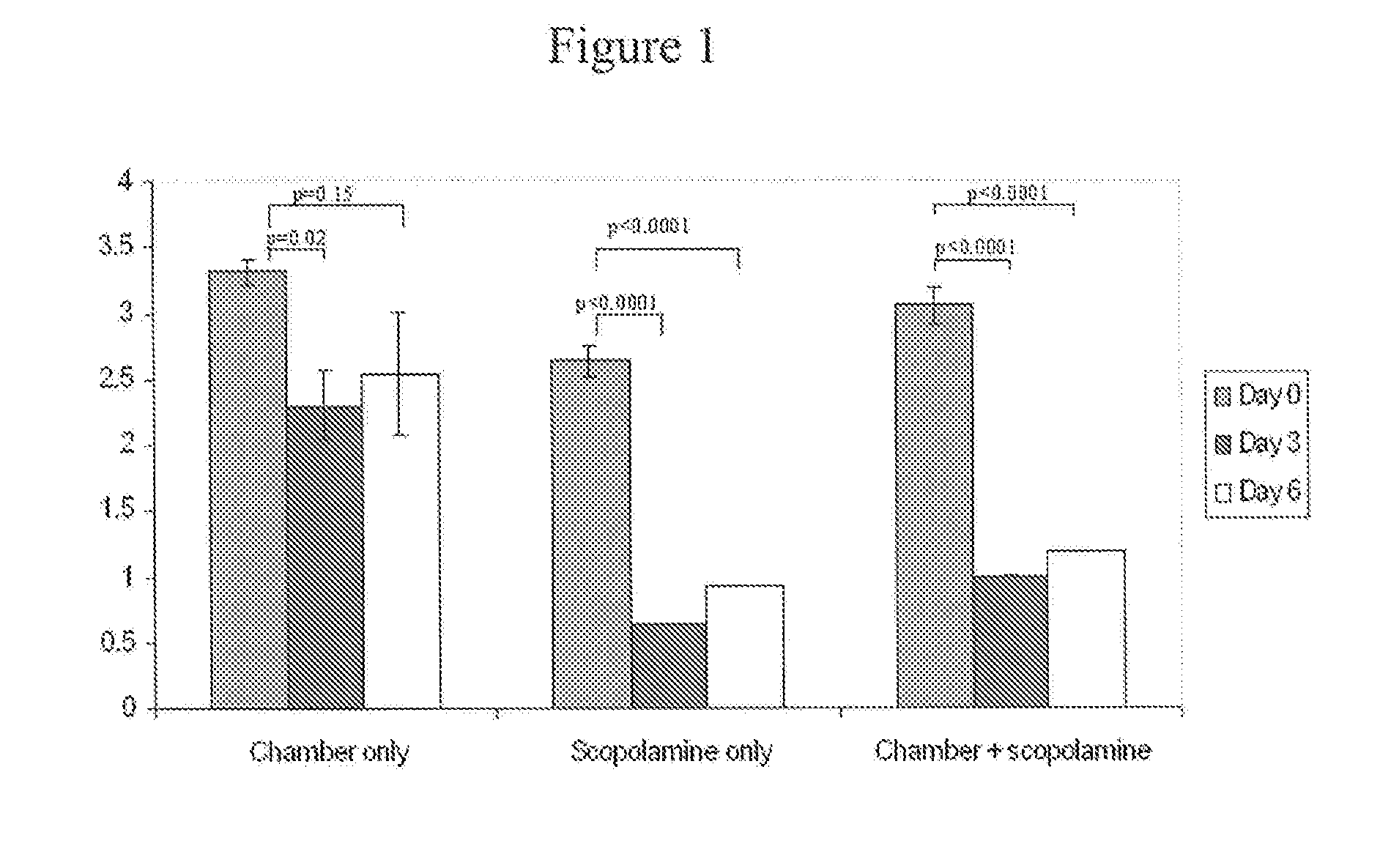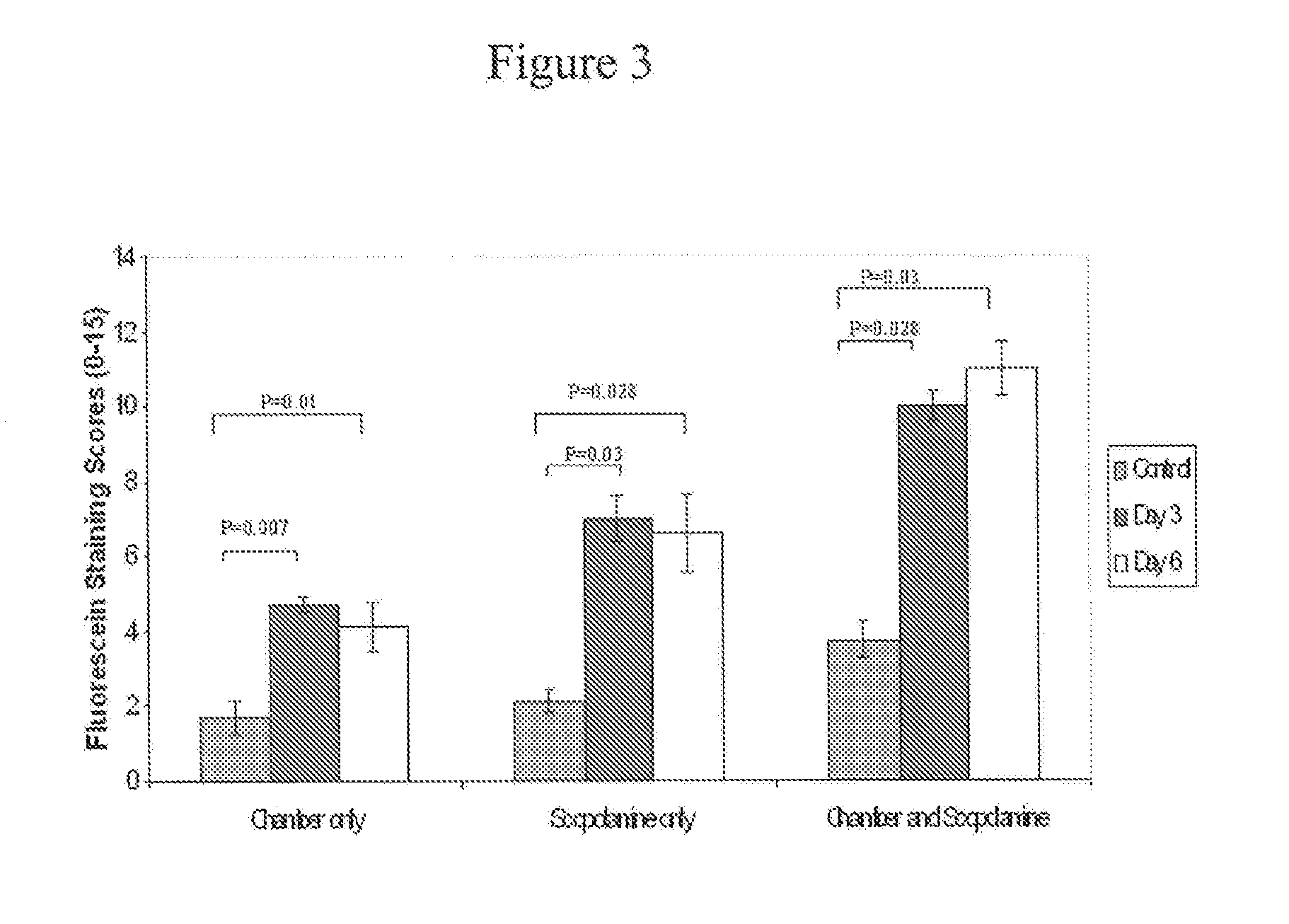Compositions and methods for treating eye disorders and conditions
a technology for eye disorders and compositions, applied in the field of eye conditions and disorders, can solve the problems of decreased functional visual acuity, inability to carry out professional work, driving at night, and insufficient current knowledge, and achieve the effect of increasing eye comfor
- Summary
- Abstract
- Description
- Claims
- Application Information
AI Technical Summary
Benefits of technology
Problems solved by technology
Method used
Image
Examples
example 1
Dry Eye Animal Model
[0133] Normal healthy 6 to 10 weeks old female Balb / c mice (Taconic Farms, German-town, NY) can be induced to have dry eye by continuously exposing them to dry environment in a controlled environmental chamber (CEC), described below. Mice in CEC were continuously exposed throughout the duration of the experiments, to low relative humidity of less than 30% (mean and standard deviation 19%±4%), high airflow (15 liters / minute) and constant temperature (21-23 Celsius). Mice in normal cages were exposed to relative humidity over 70% (mean and SD 78%±5%), no airflow and same temperature. In addition, the mice placed in CEC were also treated with scopolamine, active agent that causes pharmacological inhibition of tear secretion. The combination of CEC and scopolamine produces severe dry eye. All the mice were fed 2018 Teklad Global 18% Protein Rodent Diet.
Sustained-release transdermal scopolamine patches (scop patch) were obtained from Novartis (Summit, N.J.). One-fo...
example 2
Formulations
[0141] Formulation 3 comprises 1% ALA and 1% LA, and formulation 1 comprises 0.1% of each of the fatty acids. Formulations 2 and 4 comprise a 4:1 ratio of omega-3 to omega-6 ratio. The formulations were constituted in packing solution as the vehicle and Vitamin E was added as an anti-oxidation agent. The fatty acids were stored in dark to further decrease the risk of oxidation. The formulations are summarized in Table 1.
example 3
Active Agent Study Design
[0142] The study was a prospective masked trial. One eye each mouse was randomized to receive either vehicle (negative control), or one of the formulations. The active agents were administered in a masked fashion. 511 eye drops were administered in one of the eye, twice a day, that is the interval between the doses is 12 hours.
[0143] Dry eye was induced by combined environmental and pharmacological effect (placing the mice in CEC and applying scopolamine patch for 6 days). There were two main groups of the active agent trial. Treatment group: Eye drops were instilled after exposure to CEC+Scop patch for 48 hours. Active agent administration continues from 48 hours to Day 6. Signs of dry eye were assessed at the end of Day 6, twelve hours after the last dose. Prevention group: Eye drops were instilled from Day 0 and continues up to Day 6. Signs of dry eye were assessed at the end of Day 6, twelve hours after the last dose.
[0144] The s...
PUM
| Property | Measurement | Unit |
|---|---|---|
| Percent by mass | aaaaa | aaaaa |
| Percent by mass | aaaaa | aaaaa |
| Percent by mass | aaaaa | aaaaa |
Abstract
Description
Claims
Application Information
 Login to View More
Login to View More - R&D
- Intellectual Property
- Life Sciences
- Materials
- Tech Scout
- Unparalleled Data Quality
- Higher Quality Content
- 60% Fewer Hallucinations
Browse by: Latest US Patents, China's latest patents, Technical Efficacy Thesaurus, Application Domain, Technology Topic, Popular Technical Reports.
© 2025 PatSnap. All rights reserved.Legal|Privacy policy|Modern Slavery Act Transparency Statement|Sitemap|About US| Contact US: help@patsnap.com



